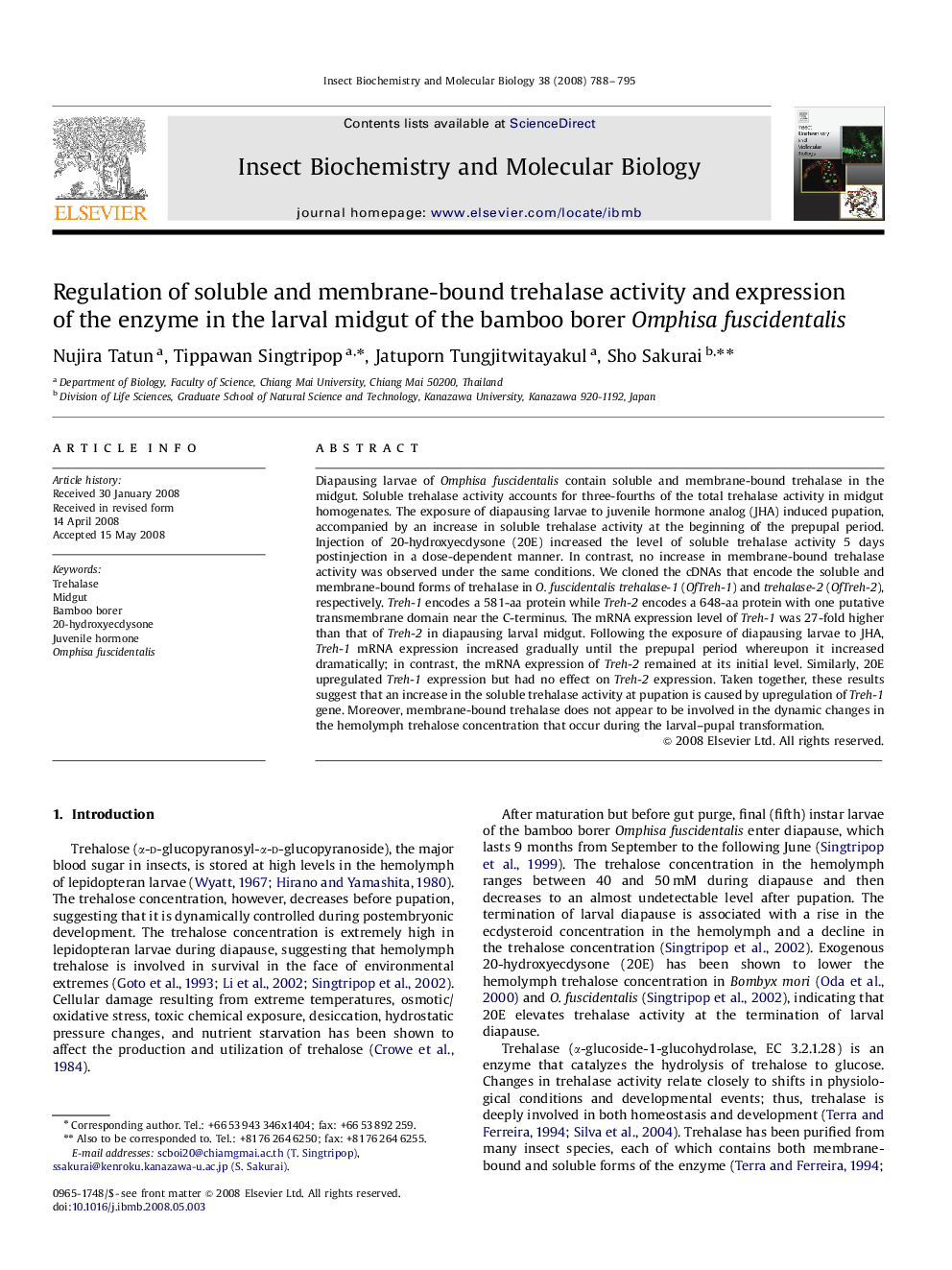| Article ID | Journal | Published Year | Pages | File Type |
|---|---|---|---|---|
| 1982814 | Insect Biochemistry and Molecular Biology | 2008 | 8 Pages |
Diapausing larvae of Omphisa fuscidentalis contain soluble and membrane-bound trehalase in the midgut. Soluble trehalase activity accounts for three-fourths of the total trehalase activity in midgut homogenates. The exposure of diapausing larvae to juvenile hormone analog (JHA) induced pupation, accompanied by an increase in soluble trehalase activity at the beginning of the prepupal period. Injection of 20-hydroxyecdysone (20E) increased the level of soluble trehalase activity 5 days postinjection in a dose-dependent manner. In contrast, no increase in membrane-bound trehalase activity was observed under the same conditions. We cloned the cDNAs that encode the soluble and membrane-bound forms of trehalase in O. fuscidentalis trehalase-1 (OfTreh-1) and trehalase-2 (OfTreh-2), respectively. Treh-1 encodes a 581-aa protein while Treh-2 encodes a 648-aa protein with one putative transmembrane domain near the C-terminus. The mRNA expression level of Treh-1 was 27-fold higher than that of Treh-2 in diapausing larval midgut. Following the exposure of diapausing larvae to JHA, Treh-1 mRNA expression increased gradually until the prepupal period whereupon it increased dramatically; in contrast, the mRNA expression of Treh-2 remained at its initial level. Similarly, 20E upregulated Treh-1 expression but had no effect on Treh-2 expression. Taken together, these results suggest that an increase in the soluble trehalase activity at pupation is caused by upregulation of Treh-1 gene. Moreover, membrane-bound trehalase does not appear to be involved in the dynamic changes in the hemolymph trehalose concentration that occur during the larval–pupal transformation.
